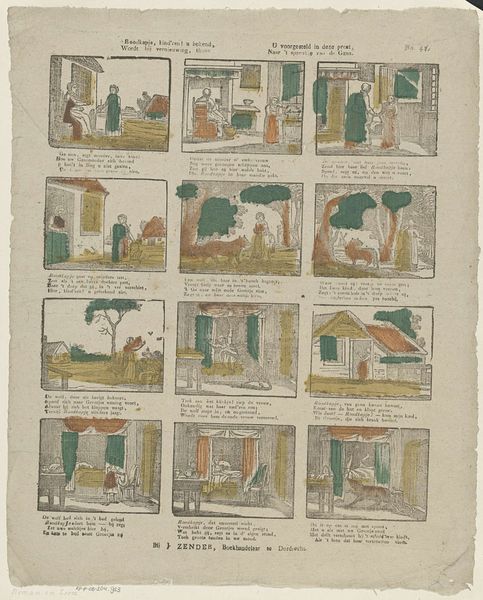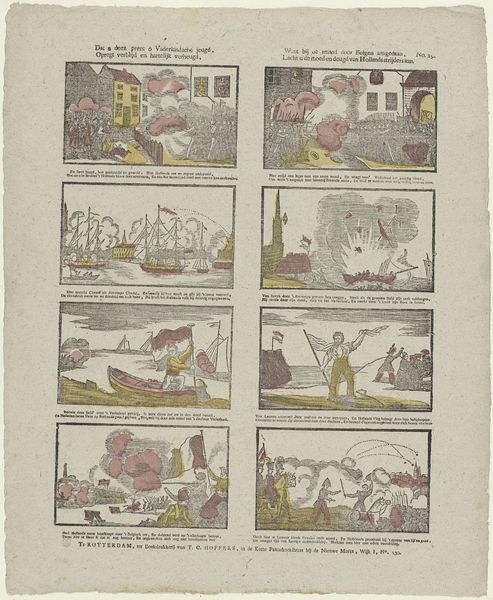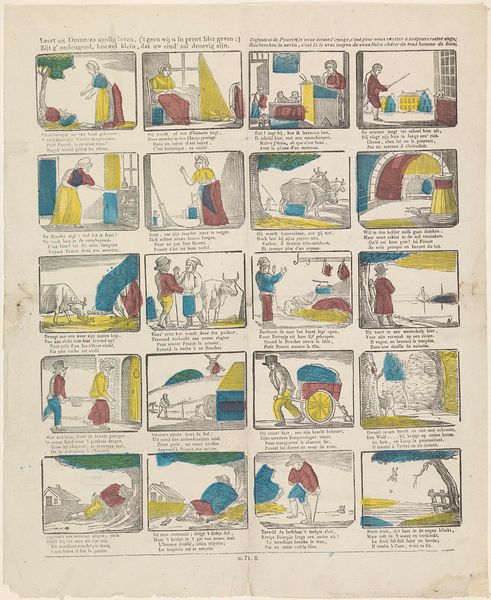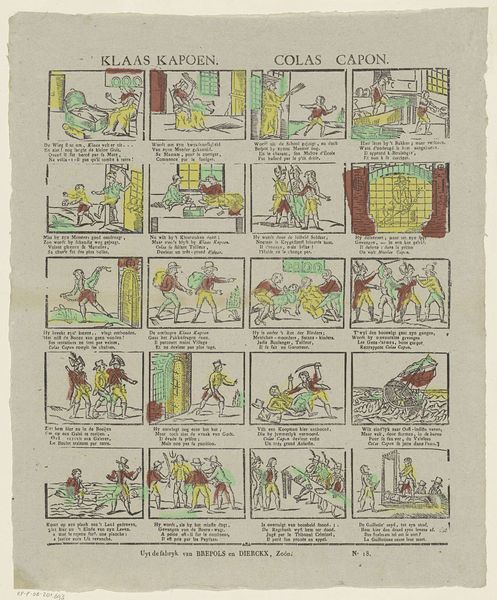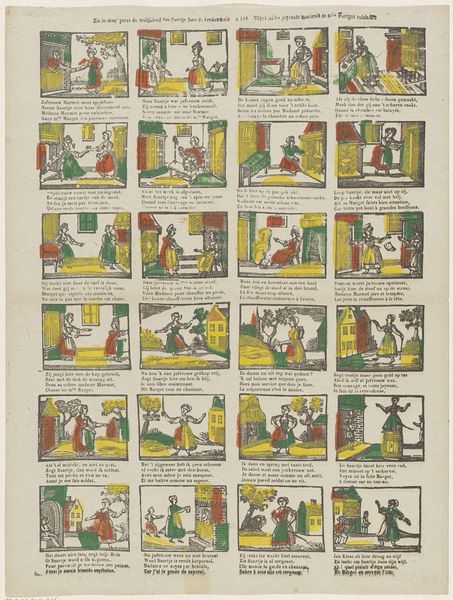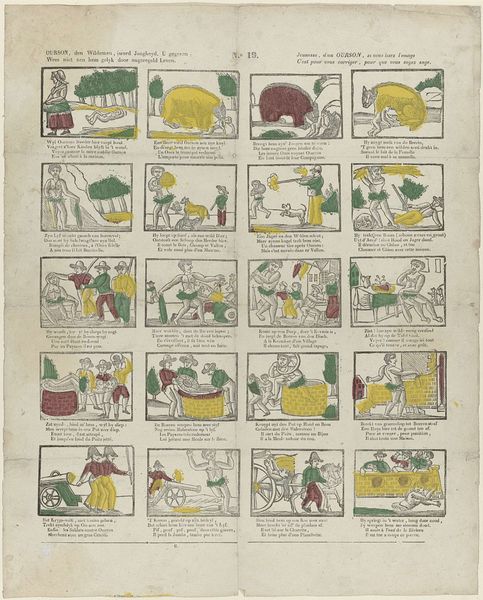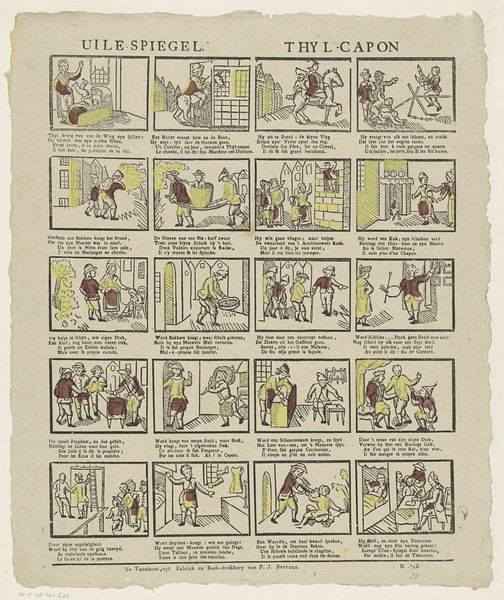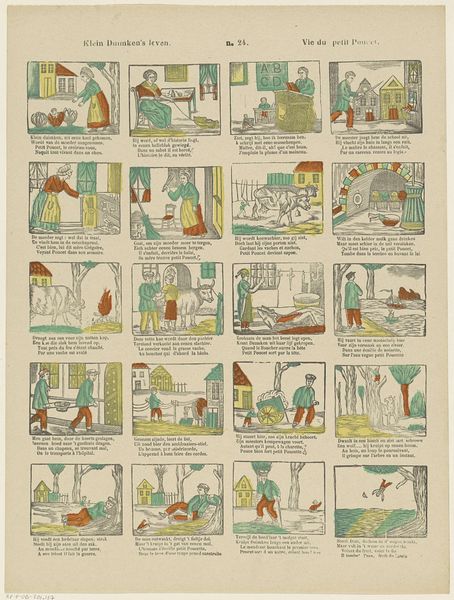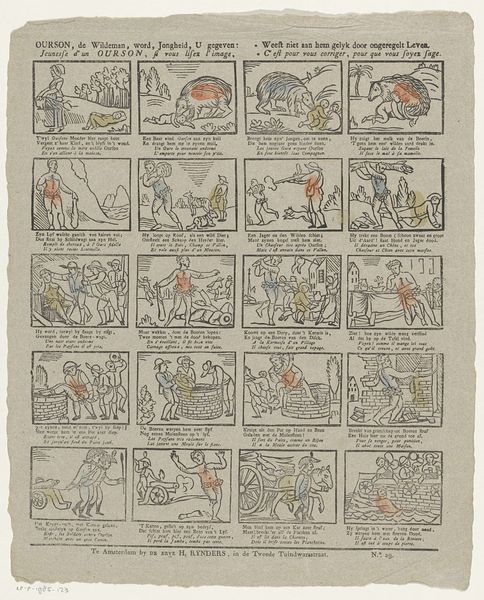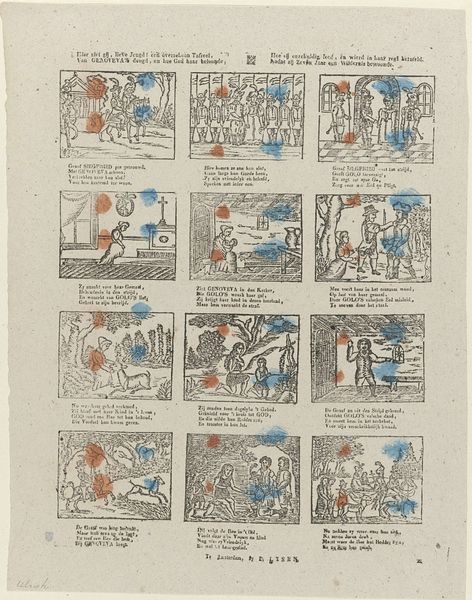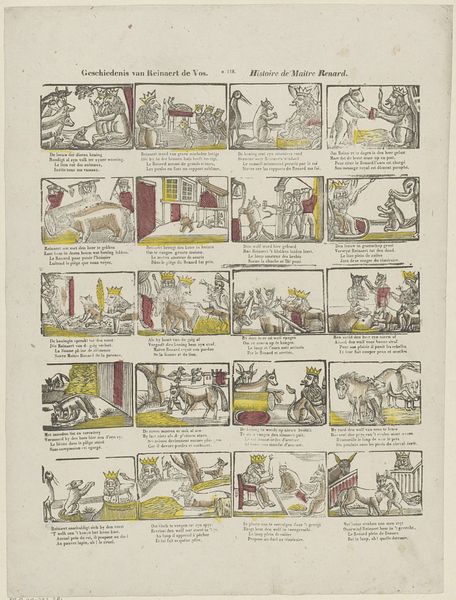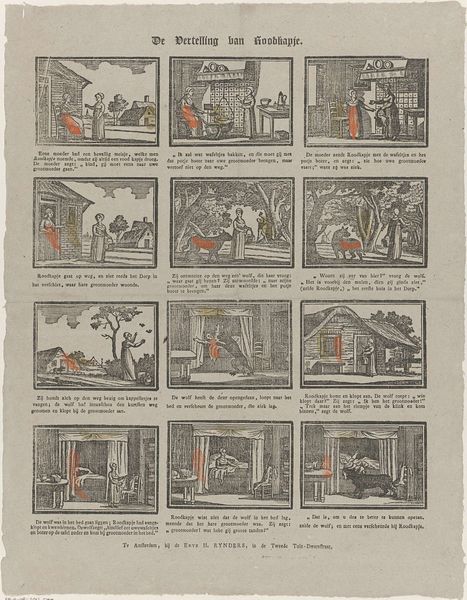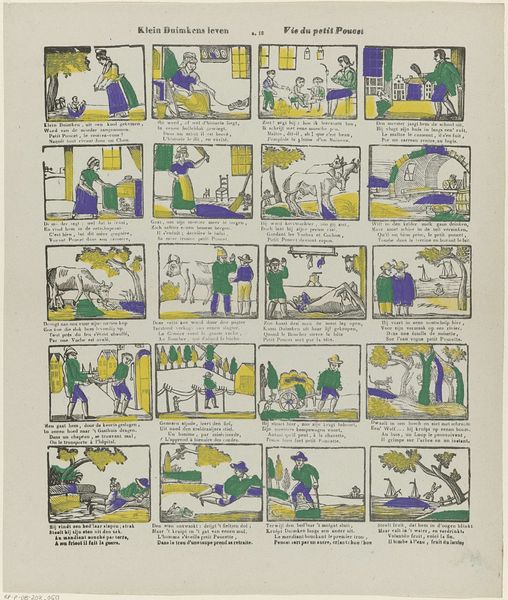
Het moedig moord toneel, bij Lypsichs oorlog Velden, / Zal deze plaat voortaan aan 't nageslacht vermelden / Théatre de la guerre, présage du malheur, / L'un est blessé ou mort, et l'autre est vainqueur 1800 - 1833
0:00
0:00
print, engraving
#
narrative-art
#
comic strip
# print
#
caricature
#
romanticism
#
comic
#
history-painting
#
engraving
Dimensions: height 401 mm, width 334 mm
Copyright: Rijks Museum: Open Domain
This is "Het moedig moord toneel", made by Philippus Jacobus Brepols sometime before 1845. It's a print, and a relatively inexpensive one at that. Notice how the material itself, paper, lends to its dissemination across society as an easily reproducible and affordable medium. The print depicts scenes from a battlefield, employing etching or engraving techniques. The lines are simple, the forms are flat, and the coloring is rudimentary. This points to a mode of production geared towards broad distribution, rather than rarefied consumption. It's not trying to be high art. Consider the amount of labor involved in producing multiple copies of this image. Each line had to be carefully etched into the printing plate. And think about the social context in which such images were consumed: How did these prints shape public opinion about war and politics, and fuel consumerism around a militarized society? By focusing on the materials, the making, and the social context, we can begin to understand how this image functioned within the wider economy of its time.
Comments
No comments
Be the first to comment and join the conversation on the ultimate creative platform.
